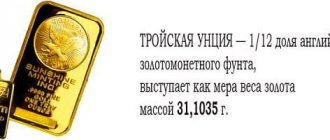Very often a problem arises such as the need to convert ounces to ml: we are talking about liquid ounces. Why might it be necessary to convert one quantity into another, and what are they? Is this unit of measurement still used today and where did it come from?
A fluid ounce is a unit of volume typically used to measure liquids. It is approximately equivalent to 30 milliliters. Many definitions of this unit of measurement have been used throughout history, but in the modern world only two remain in common use, in England and in the USA.
Volume matching
In the UK, a fluid ounce is 1/20 of a pint, or 1/160 of a gallon. If you convert this ounce into milliliters, it will be 28.4. A fluid ounce in the United States is equal to 1/16 of a pint and 1/128 of a gallon. There are many different ounces, most of which are a unit of mass measurement, the fluid ounce is different from them. Sometimes the specification of which ounce is meant is omitted, and one often finds the name simply "ounce" in relation to any of these quantities. What we are talking about usually becomes clear from the context.
What is a troy ounce and how is it designated?
A troy ounce is equal to approximately 31.1 grams. Its exact weight is 31.1034768 grams. The official designation for a troy ounce is oz t. In stock quotes, the symbol X is used to denote it: XAU - an ounce of gold, XAG - an ounce of silver, XPT - an ounce of platinum, XPD - an ounce of palladium.
How to use Western recipes correctly? More details
Measures
So, an ounce is, of course, not only a weight standard. These are also two units of volume and one of force. In general, to find out the mass, there are several ounces. The Romans, as mentioned above, also used it to measure length, area, capacity and even the size of an inheritance. Thus, 1 ounce of length in Ancient Rome was equal to 0.0246 meters. And the surface (area) there was measured using jugers. Accordingly, one twelfth of it - 1 ounce - is equal to 209.91 meters.
Where does the name of the unit of measurement come from?
The name of the troy ounce presumably comes from the French city of Troyes, a center of international trade known since the 9th century. The first mention of the troy ounce dates back to 1390. In Troyes, which at that time was one of the most important centers of trade in the world, a standard system of measures was introduced to simplify the exchange of goods between traders from different countries. The basis for the standardized measure of weight was the French livre, which included the troy pound of silver. Soon, by order of the English king with French roots, Henry II , troy units of measurement - grains, ounces and pounds - began to be used in England.
These weights were also used to weigh grain crops. In addition, the troy ounce was used by pharmacists at that time to determine the weight of drugs.
The previously existing Troyes system of measures is now outdated; troy ounces are actively used only in banking and jewelry as a noble standard for the weight of precious metals.
American system of measures
In the United States, pounds are still used to measure weight. And along with them, therefore, ounces. But again, not the same as everywhere else.
Avoirdupois or the so-called trading ounce. Used for selling goods by weight. In the metric system its value is 28.349 g.
The US fluid ounce is used to measure volumes. It is approximately 29.537 ml. When indicating the volume on food packages, for convenience, it is equated to 30 milliliters. The British, by the way, have their own fluid ounce. Its volume is 28.413 ml.
What else is measured in troy ounces?
The weight of precious metal coins issued by central banks is measured in fractions of a troy ounce. For example, in the United States, American Eagles have been minted since 1986 - an official means of payment recognized in the world precious metals market. The coins are available in four denominations: 1/10, 1/4, 1/2 and 1 ounce. Based on the Gold Weight Coin Act, the gold content of the coins is guaranteed by the US government. Thus, a gold coin weighing 1 ounce, i.e. 31.104 grams, weighs a total of 33.931 grams. It has a diameter of 32.70 millimeters and a thickness of 2.87 millimeters.
Most modern coins are produced from various alloys that contain one or another proportion of precious metal. In Russia, grams are usually used to indicate the weight of a coin, but the precious metal content always corresponds to a certain fraction of a troy ounce. Thus, the gold commemorative coin “St. George the Victorious” with a face value of 50 rubles, issued by the Bank of Russia, weighs 7.89 grams, the mass of pure gold in it is at least 7.78 grams, which is 1/4 troy ounce. And the silver “St. George the Victorious” with a face value of 3 rubles weighs 31.5 grams, the mass of pure silver in the coin is at least 31.1 grams, i.e. approximately one troy ounce.
How many grams of different products fit in a faceted glass. Memo Read more
Word
Without a doubt, this is a term of Latin origin. In ancient Rome, this was the name given to one twelfth of the libra, the basic measure of weight. However, not only mass was measured with it. In general, it may seem that the Romans were very fond of this word.
They often said: “I walked four ounces of the way to...” or “I read three ounces of the book.” What did this mean? Is it really possible to measure distance using scales? Of course not. An ounce is another twelfth of something. Well, either one tenth or thirteenth - depending on the country and time. So what else was measured for her? And How? Also in Ancient Rome, an ounce was called a coin. When minting, one dot was placed on it. The coin, of course, had a small denomination. It was made from an alloy of tin, copper and lead. Some Spanish (doubloons) and Chinese gold coins were also called this way.
Who today determines the cost of one troy ounce?
The price for one troy ounce of gold is set by one of the oldest trading platforms in the world: the London Metal Exchange. Price fixing - the well-known London fixing - occurs twice a day: at 10:30 and in the afternoon, at 15:00 London time. The London Stock Exchange determines the price of gold based on the results of two trading sessions, which are held from 11:40 to 14:45 and from 14:55 to 17:00.
The price of gold on the London Stock Exchange plays a decisive role in setting the price of precious metals on world exchanges, and also serves as an indicator of the state of the world economy. Based on these data, analysts make assumptions regarding exchange rates and the value of various minerals on the world market.
Recently, the price of gold has been rising. Since March 2022, its price has increased by more than 21%. Amid the pandemic and the weakening dollar, investors are investing in the precious metal because they consider it the safest asset.
Renewable Energy
Other alternative forms of energy are solar, ocean, and wind energy. Technologies for producing such energy have not yet been developed to such an extent that humanity can abandon the use of fossil fuels. However, thanks to government subsidies and the fact that they do not cause much harm to the environment, these types of energy are becoming increasingly popular.
Photovoltaic panel
Energy of sun
Experiments on harnessing solar energy began as early as 1873, but these technologies did not become widespread until recently. Solar energy is now growing rapidly, thanks in large part to government and international subsidies. The first solar energy centers appeared in the 1980s. Solar energy is most often collected and converted into electricity using solar panels. Sometimes heat engines are used, in which water is heated by solar heat. As a result, water vapor is formed, which drives the turbogenerator.
Wind turbine at Exhibition Place. Toronto, Ontario, Canada.
Wind energy
Humanity has used wind energy for many centuries. The wind was first used in navigation about 7,000 years ago. Windmills have been in use for several hundred years, with the first wind turbines and wind generators appearing in the 1970s.
Ocean Energy
The energy of tides has been used since the times of Ancient Rome, but people began to use the energy of waves and sea currents only recently. Currently, most tidal and wave power plants are just being developed and tested. The problems are mainly related to the high cost of building such stations and the shortcomings of today's technologies. Portugal, the UK, Australia and the US currently operate wave power plants, but many are still in the pilot phase. Scientists believe that ocean energy will become one of the main areas of green energy in the future.
Tidal turbine at the Canadian Science and Technology Museum in Ottawa
Biofuel
When biofuels are burned, energy is released that plants have converted from solar energy through the process of photosynthesis. Biofuels are widely used both for domestic purposes, such as heating homes and cooking, and as a fuel for transport. Varieties of biofuel - ethyl alcohol and oils - are produced from plant and animal fats. In motor vehicles, biodiesel fuel is used either in pure form or mixed with other types of diesel fuel.
Geothermal energy
The energy in the earth's core is stored as heat. The Earth's crust has been heated to very high temperatures since its formation and still maintains a high temperature today. The radioactive decay of minerals in the Earth's interior also produces heat. Until recently, access to this energy was possible only at the junctions of the earth's layers, in places where hot springs formed. More recently, the development of geothermal wells has begun in other geographic regions in order to begin to use this energy to generate electricity. Currently, the cost of energy obtained from such wells is very high, so geothermal energy is not used as widely as other types of energy.
Niagara River, near the William B. Rankin Power Plant. It was decommissioned in 2009. Niagara Falls, Ontario, Canada.
Hydropower
Hydropower is another alternative to fossil fuels. Hydropower is considered “clean” because, compared to burning fossil fuels, its production is less harmful to the environment. In particular, when generating hydropower, greenhouse gas emissions are negligible.
Hydropower is generated by the flow of water. Humanity has widely used this type of energy for many centuries and its production remains popular due to its low cost and availability. Hydroelectric power plants (HPPs) collect and convert the kinetic energy of river water flow and the potential energy of water in reservoirs using dams. This energy drives hydraulic turbines, which convert it into electricity. Dams are designed to take advantage of the difference in elevation between the reservoir from which the water flows and the river into which the water flows.
Hydroelectric power station named after Robert Moses. Lewiston, New York, USA
Despite the advantages of hydropower, it is associated with a number of problems, such as the harm caused to the ecosphere during the construction of dams. Such construction disrupts ecosystems, and living organisms are cut off from a vital environment in the ecosystem. For example, fish cannot swim upstream to spawn and do not always adapt to new conditions. The public cannot always control the work of energy companies, so the construction of new hydroelectric power plants may result in a humanitarian crisis. An example of such a crisis is the eviction of residents as a result of the construction of the Three Gorges hydroelectric dam in China. During the construction of this hydroelectric power station, the Chinese government evicted more than 1.2 million residents and flooded a huge area, including fields, industrial zones, cities, and towns. Household and industrial waste was washed away and clogged the new reservoir, poisoning plants and fish. Due to the huge amount of water in the reservoir, seismic activity has increased in the region. In 2011, the Chinese government acknowledged this and several other problems.
European countries, Africa, China
During the Roman Empire, as a systematic concept and metric unit, it was borrowed by the people of almost all European countries. Before the introduction of the metric system of measures in the 18th century, the ounce was the most common unit in the field of weight measurement. In Germany, it (Unze) was equal to 1/16 of a large trade pound and was used in apothecary business, making up 1/12 of the so-called small apothecary weight. From here Russia borrowed an ounce. In Russian pharmacies, as in the early 18th century, they continue to determine weight using the uncial system.
The Netherlands, having switched to the metric system of measures in 1820, left the ounce (Dutch ons) to denote weight in 100 g. The use of ounces as the main units of weight was widespread in Italy (Oncia, 12 Roman ounces in a pound), in Spain ( Onza) and Portugal (Onca): 1/16 pound, Castilian libra or Portuguese arratel. In Great Britain, the ounce as a measure of weight corresponds to such units as troy (1/12), apothecary (1/12) and trade (avoirdupois, 1/16) pounds.
In Sicily, until 1860, the ounce coin was in wide circulation, equal to 2.5 scudi, 3 ducats or 123.4 today's Italian lire.
As a unit of weight, with slight variations, the ounce (Ukkiya) even reached northern Africa. In Algeria it is 34.130 g, in Tunisia 31.680 g, in Tripoli 30.020 g, in Egypt 37.068 g.
The Chinese monetary unit, the tael, is also called the ounce.
Present day
So, today the concept of an ounce, in addition to the name of several banknotes and units of mass measurement, includes two measures of the volume of liquid bodies. These are the so-called “fluid ounces” (English, with a volume of 28,413,063 ml, and American, the exact volume of which is 29,573,531 ml, but for the convenience of food labeling it is rounded to 30 ml), and even one unit of force (English engineering and gravity units, 1 ounce – 0.278 newton).
So our good old ounce should also be included in the category of “eternal values”.











